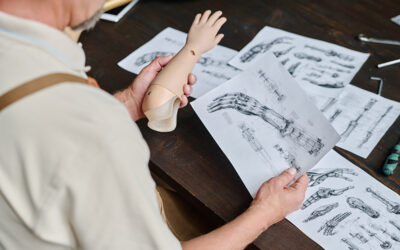If you refer to the ICD-10 manual, you will find that the 14,000 ICD-9 codes have exploded into around 68,000 ICD-10 codes. Though the increase in the number of medical codes is bound to make the medical coding process more accurate, some consider the specificity of ICD-10 codes as a burden while some take it as a valuable chance to understand and treat complex medical conditions better. Knowing how to link these codes to the correct CPT (Current procedural terminology) is critical for correct reflection of diseases as their treatments. Some healthcare experts opine that certain ICD-10 codes appear really absurd in their granularity, stuffed up with description for seemingly impossible situations. For example, there is a code (W93.2) for prolonged exposure in deep freeze unit or refrigerator! While more specificity with ICD-10 code set is already a heated debate, let’s take a look at the obvious pros and cons of this coding system.
Advantages of Using Specific Codes
The increase in the number of medical codes provides two major advantages for healthcare professionals such as:
* ICD-10 code set can differentiate between the left and right sides of the body, which will help insurers detect fraudulent medical billing practices. For example, the ICD-9 code set provides only one code (V43.64) for hip joint replacement which is assigned whether the replacement is done on the right side or left side. But in ICD-10, there are codes to specify left joint, right joint and bilateral such as:
- Z96.64: Presence of artificial hip joint
- Z96.641: Presence of right artificial hip joint
- Z96.642: Presence of left artificial hip joint
- Z96.643: bilateral
- Z96.649: Presence of unspecified artificial hip joint
This will help insurers identify where exactly the hip replacement has been performed and reimburse accordingly.
The new codes can specify whether a visit to the hospital was the first round of treatment or a subsequent encounter, which is critical for reimbursement since first visits tend to require more resources. For example, the ICD-9 code for sprain of carpal (joint) of wrist is 842.01. The ICD-10 codes for the same case specify whether it is the right or left wrist and the encounter.
- S63.511: Sprain of carpal joint of right wrist
- S63.511A: initial encounter
- S63.511D: subsequent encounter
- S63.511S: sequela
Challenges with Specific Codes
* Adds Complexity – The larger set of codes may make the coding process more complex. For a single condition, you may require to report multiple codes. Suppose a patient who slipped and fell during ice skating in an indoor rink, strained her Achilles tendon in the left leg. You will have to use four types of ICD-10 codes to specify this condition, a code for the strain of left Achilles tendon, activity code, another code for the place of occurrence and the external cause code.
- S86.012: Strain of left Achilles tendon
S86.012A: initial encounter
S86.012D: subsequent encounter
S86.012S: sequela
- Y93.21: Activity, ice skating
- Y92.330: Ice skating rink (indoor) (outdoor) as the place of occurrence of the external cause
- W00.0: Fall on same level due to ice and snow
W00.0XXA: initial encounter
W00.0XXD: subsequent encounter
W00.0XXS: sequela
* Lowers Productivity – The coders may find it difficult to choose the right code from a larger code set. In the previous example, we have seen how complex the codes are. This difficulty will affect the coders’ productivity. A 40 percent decrease in coder productivity was estimated at the outset when ICD-10 was implemented in Canada though the levels improved over time to 20 percent. HIM leaders expect this kind of decline in coder productivity level when ICD-10 is implemented in the U.S. If the organization authorities do not take proper pre-cautions and plan for coder productivity loss, this could lead to delayed cash flow or even lost revenue.
* Difficult Transition – The specificity of codes makes the ICD-10 transition time-consuming and expensive. As per the October 2013 ICD-10 Readiness Survey by the Workgroup for Electronic Data Interchange (WEDI), the healthcare industry is far behind in achieving key ICD-10 compliance milestones with one-half of health care providers expected to start the external testing in the first half of 2014. According to the American Medical Association (AMA) that opposes the ICD-10 switch, it would cost $56,000 to $8 million for physician offices to make the transition to ICD-10, depending on the size of the practice.
The U.S President signed the bill Protecting Access to Medicare Act of 2014 into law which delays ICD-10 implementation by October 1, 2015.
The specificity of ICD-10 is really beneficial on the one hand and rather challenging on the other. It is better to trace the quality of care that a patient receives with a more precise coding system. However, rigorous training is essential for coders to choose the most appropriate code from a larger code set without affecting their productivity levels. The service of a Physician and Hospital coding company that offers the service of experienced, AAPC-certified, ICD-10 ready coders will prove beneficial in such a scenario as physicians can save the training costs and efficiently balance patient care and administrative tasks.



